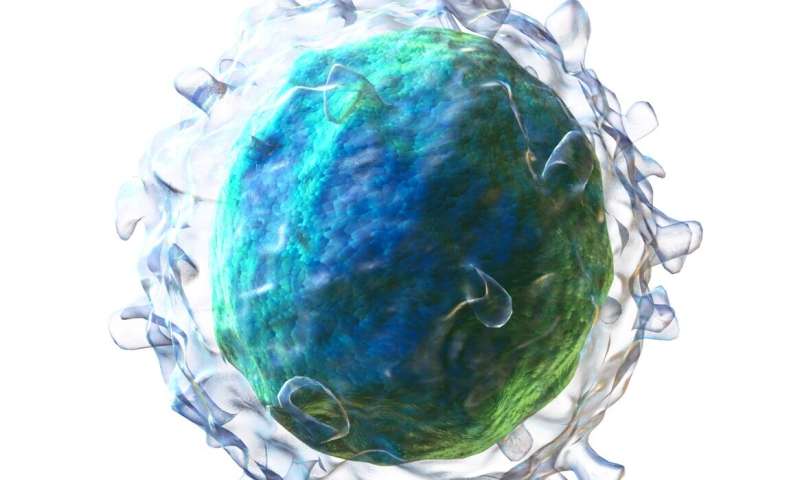April 18, 2019 report
Researchers find number of mutations in human B lymphocytes increases with age

A team of researchers at the Albert Einstein College of Medicine has found that the number of somatic mutations in human B lymphocytes increases with age. In their paper published in Proceedings of the National Academy of Sciences, the group describes their study, which involved sequencing cells from people ranging from newborn babies to people in their 100s and what they found.
As scientists continue to try to understand what makes humans and other animals age, and perhaps find a way to stop it, some have begun focusing on the rate at which mutations occur in our cells. In this new effort, the researchers sequenced human B lymphocytes (white blood cells that produce antibodies when needed) from people in their infancy all the way up to their 100s. Their goal was to learn more about the rates of mutations in B lymphocytes as people grow older.
The researchers report that they found the number of mutations increased with the age of the people tested. Newborns, for example, had a median of 463.4 mutations. People between the ages of 27 and 30 had a median of 1,181.9 mutations, those 52 to 75 had a median of 2,101.7 mutations and those between 97 and 106 had a median of 3,127.0 mutations. The researchers also note that the majority of the mutations they observed were unique to the cell in the individual in which they were found—though there were a few exceptions. They found, for example, that approximately two dozen of the mutations were the same in other cells in the same person. They also noted that the mutations appeared randomly across the genome except for a few hotspots here and there. The researchers report that some of the mutations they observed were similar in nature to mutation types seen in some cancer cells.
The researchers also combined their sequencing results with data from exome and ATAC-sequencing data and discovered that mutations with transcription factor binding domains also increased with age—and so did mutations in active open chromatin regions. The group concludes their paper by suggesting that their study provides yet more evidence of the critical role that mutations play in both aging and cancer.
More information: Lei Zhang et al. Single-cell whole-genome sequencing reveals the functional landscape of somatic mutations in B lymphocytes across the human lifespan, Proceedings of the National Academy of Sciences (2019). DOI: 10.1073/pnas.1902510116
© 2019 Science X Network



















